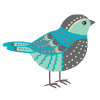“Tapping into apps didn’t cure my ADHD, just like taking that salmon-colored pill didn’t make my symptoms disappear. But using a range of apps has allowed me to evolve from tech geek to productivity geek. When you go through life being clueless about managing any of the details of life, and then you crack the code, it’s hard not to geek out.”
Tag: Mental Illness
How Childhood Trauma Could Be Mistaken for ADHD
Dr. Nicole Brown’s quest to understand her misbehaving pediatric patients began with a hunch.
Brown was completing her residency at Johns Hopkins Hospital in Baltimore, when she realized that many of her low-income patients had been diagnosed with attention deficit/hyperactivity disorder (ADHD).
These children lived in households and neighborhoods where violence and relentless stress prevailed. Their parents found them hard to manage and teachers described them as disruptive or inattentive. Brown knew these behaviors as classic symptoms of ADHD, a brain disorder characterized by impulsivity, hyperactivity, and an inability to focus.
When Brown looked closely, though, she saw something else: trauma. Hyper-vigilance and dissociation, for example, could be mistaken for inattention. Impulsivity might be brought on by a stress response in overdrive.
People With ADHD Have Different Brains
“For the study, a team of Dutch neuroscientists analyzed MRI scans of the brains of more than 3,200 people between the ages of four and 63 years old (with a median age of 14 years old), measuring total brain volume as well as the volume of seven brain regions thought to be linked to ADHD.
Roughly half of the participants had a diagnosis of ADHD.
The brain scans revealed that five brain regions were smaller in people with ADHD. These include the amygdala, an almond-shaped structure involved in processing emotions like fear and pleasure; the hippocampus, which plays a role in learning, memory and emotion; and three brain areas within the striatum ― the caudate nucleus, the putamen and the nucleus accumbens. The structures within the striatum are involved in the brain’s reward system and in its processing of dopamine, a neurotransmitter that helps control motivation and pleasure.
These differences were more dramatic in children than in adults, leading the study’s authors to conclude that ADHD involves delayed brain development. It appears that as the brains of people with ADHD develop and mature, these brain regions “catch up” to the brain regions of people without ADHD.”
Tips To Calm An Anxious Child
” Imagine you are driving in the car. You look in the rearview mirror and see your child trying to shrink into her seat.
“What’s wrong?” you ask.
“I don’t want to go to the birthday party.”
“But you’ve been excited all week. There will be cake and games and a bounce house. You love all of those things,” you try to reason.
“But I can’t go. There will be lots of people there I don’t know. No one will play with me. My tummy hurts.”
Sound familiar? As a parent of an anxious child, you might regularly find yourself in situations where no matter what you try, what effort you make, what compassion you offer, or what love you exude, nothing seems to help quash the worry that is affecting your little one’s everyday interactions.
In my work with anxious children, I have found it tremendously beneficial for both parents and kids to have a toolkit full of coping skills from which to choose. As you know, every child is different and some of the tools described below will resonate more than others. When you pick one to work with, please try it at least two to three times before making a judgment on whether it suits your child and family.
